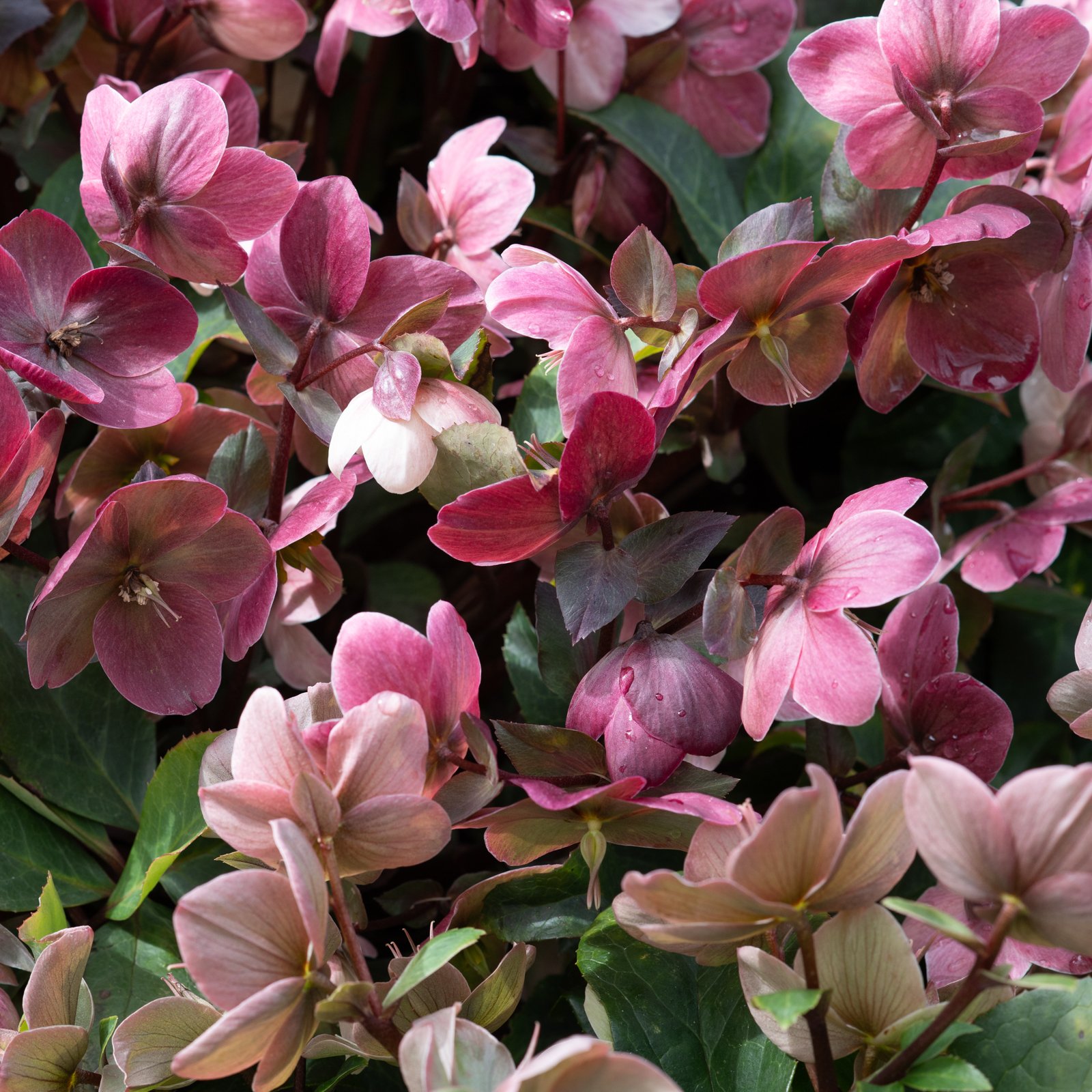Hellebores on the Seattle Waterfont
Walking along the new Seattle Waterfront Park in late March, one encounters grey skies, zipped coats, and nearly four thousand hellebores in bloom. Planted in mass, they are stunning. With each mature plant bearing up to fifty blooms, visiting the park means experiencing the cumulative impact of over a hundred thousand blossoms all at once.
With flowers that emerge in early winter and tough evergreen foliage, hellebores are a mainstay of both our public and private gardens, where we always try to design for four seasons of interest. Exquisite on a small scale and sensational on a large scale, they are well-suited for a variety of different settings and styles. We frequently plant them in drifts in naturalistic and cottage gardens and in low, architectural blocks in more modern gardens. They’re also great additions to container plantings, as many have a relatively small stature and tidy habit.
Hellebores may be enjoyed by pedestrians and drivers alike along Seattle’s Waterfront Park.
Cinnamon Snow
One of the most beloved qualities of hellebores is the endurance of their blossoms, which hold up and look beautiful for many months. The reason their flowers are so long-lasting is that they are actually made of tough sepals (modified leaves) rather than delicate petals. These sepals are able to withstand just about anything a Pacific Northwest winter can throw at them and sustain very little damage.
With over 15 recognized species and an abundance of variants and hybrids, it can be a challenge to decide which hellebore to plant. There is such a wide range of flower forms and colors to choose from – big and small, single and double, solids, gradients and picotees (flowers whose edges are a different color than the rest). We have found that the lighter pinks, whites, and yellows tend to show up better when viewed from a distance, while darker colors can add drama and intrigue to more intimate spaces.
Native to Europe and Northern Asia, hellebores thrive in Pacific Northwest gardens. Provided soil that drains reasonably well, they are adaptable to a variety of cultural conditions. Unlike some other introduced species, hellebores are well-behaved, posing very little risk of spreading into native plant communities while simultaneously providing value to local wildlife. Deer and rabbits tend to leave them alone, while bumblebees and other early season foragers benefit from their abundant winter pollen.
There are a few diseases that affect hellebores – most notably Hellebore leaf spot and black death. Fortunately, there are many cultivars that are bred for disease resistance, and over the years we have learned which ones perform best. Some favorites specified in our planting plans for the Seattle Waterfront Park include Helleborus x ballardiae ‘HCG Cinnamon Snow,’ Helleborus x ballardiae ‘HCG Pink Frost’ and Helleborus x hybridus ‘Apricot Blush.’ Like all the plants we chose for this project, these were selected for their vigor, disease resistance and ability to perform well in a stressful urban environment.
The next time you’re planning a visit to the Seattle Waterfront Park, we hope you’ll look out for the hellebores. They will be blooming for a couple more months.





